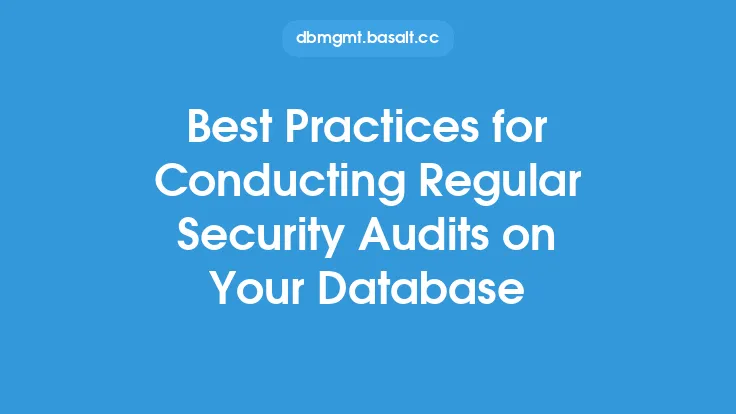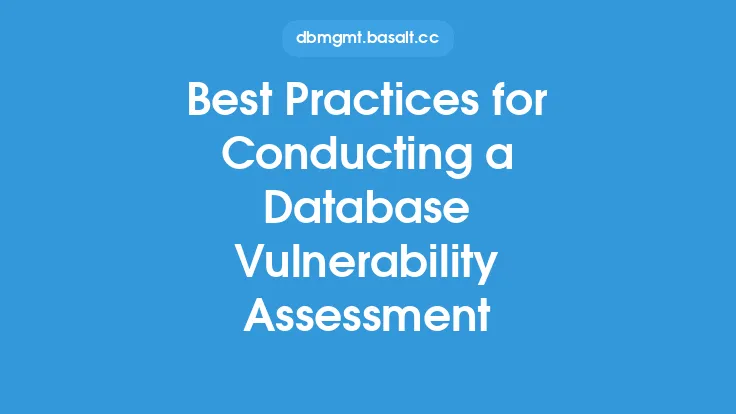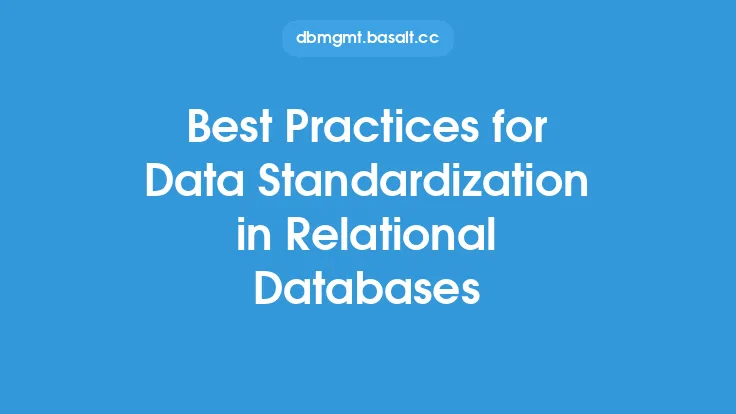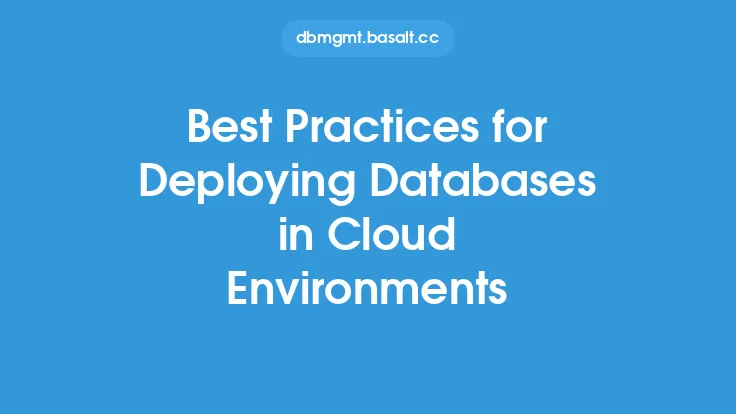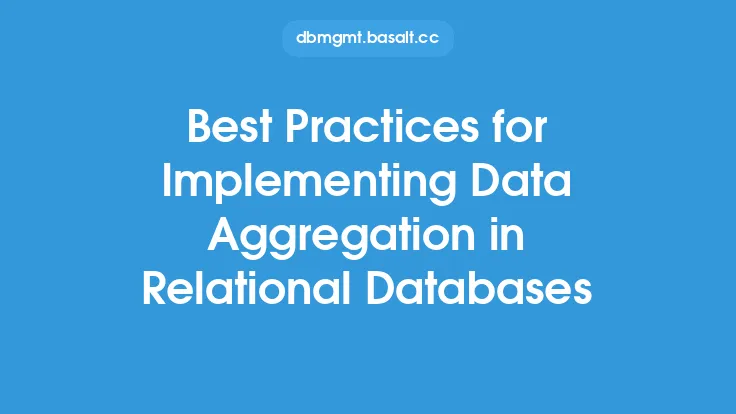Conducting penetration tests on databases is a crucial aspect of ensuring the security and integrity of an organization's data. A penetration test, also known as a pen test or ethical hack, is a simulated cyber attack against a database to assess its vulnerabilities and weaknesses. The goal of a penetration test is to identify potential entry points that an attacker could exploit to gain unauthorized access to sensitive data. In this article, we will discuss the best practices for conducting penetration tests on databases, highlighting the key steps, techniques, and tools involved in the process.
Planning and Preparation
Before conducting a penetration test on a database, it is essential to plan and prepare carefully. This involves defining the scope of the test, identifying the database systems to be tested, and determining the testing methodology. The scope of the test should include the specific database systems, networks, and applications to be tested, as well as the types of attacks to be simulated. It is also crucial to obtain permission from the relevant stakeholders and to ensure that the test is conducted in a controlled and safe environment. The testing team should consist of experienced professionals with expertise in database security, penetration testing, and ethical hacking.
Reconnaissance and Information Gathering
The first step in conducting a penetration test on a database is to gather information about the target system. This involves reconnaissance and information gathering, which can be done using various techniques such as network scanning, DNS enumeration, and social engineering. The goal of this step is to identify potential vulnerabilities and weaknesses in the database system, including open ports, services, and protocols. The testing team can use tools such as Nmap, Nessus, and OpenVAS to scan the network and identify potential entry points. Additionally, social engineering techniques such as phishing and pretexting can be used to gather information about the database system and its users.
Vulnerability Scanning and Exploitation
Once the reconnaissance and information gathering phase is complete, the next step is to conduct vulnerability scanning and exploitation. This involves using specialized tools and techniques to identify and exploit vulnerabilities in the database system. The testing team can use tools such as SQLMap, Burp Suite, and ZAP to scan the database system for vulnerabilities such as SQL injection, cross-site scripting (XSS), and cross-site request forgery (CSRF). The goal of this step is to identify potential vulnerabilities that an attacker could exploit to gain unauthorized access to the database.
Post-Exploitation and Privilege Escalation
After exploiting a vulnerability, the next step is to conduct post-exploitation and privilege escalation. This involves using various techniques to escalate privileges and gain access to sensitive data. The testing team can use tools such as Metasploit and PowerShell to escalate privileges and gain access to sensitive data. Additionally, techniques such as password cracking and hash extraction can be used to gain access to sensitive data.
Reporting and Remediation
The final step in conducting a penetration test on a database is to report and remediate the findings. This involves documenting the vulnerabilities and weaknesses identified during the test, as well as providing recommendations for remediation. The report should include a detailed description of the vulnerabilities and weaknesses, as well as the potential impact of an attack. The testing team should also provide recommendations for remediation, including patches, updates, and configuration changes. Additionally, the report should include a risk assessment and prioritization of the vulnerabilities and weaknesses, to help the organization focus on the most critical issues.
Best Practices and Recommendations
To ensure the success of a penetration test on a database, it is essential to follow best practices and recommendations. These include:
- Conducting regular penetration tests to identify and remediate vulnerabilities and weaknesses
- Using a combination of automated and manual testing techniques to ensure comprehensive coverage
- Involving experienced professionals with expertise in database security, penetration testing, and ethical hacking
- Ensuring that the test is conducted in a controlled and safe environment
- Providing detailed reporting and remediation recommendations
- Prioritizing and remediating vulnerabilities and weaknesses based on risk assessment and prioritization
- Continuously monitoring and assessing the database system for new vulnerabilities and weaknesses
Tools and Techniques
There are various tools and techniques available for conducting penetration tests on databases. These include:
- Network scanning tools such as Nmap and Nessus
- Vulnerability scanning tools such as SQLMap and Burp Suite
- Exploitation frameworks such as Metasploit and PowerShell
- Social engineering tools such as phishing and pretexting
- Password cracking and hash extraction tools such as John the Ripper and Hashcat
- Reporting and remediation tools such as Excel and Word
Conclusion
Conducting penetration tests on databases is a critical aspect of ensuring the security and integrity of an organization's data. By following best practices and recommendations, and using a combination of automated and manual testing techniques, organizations can identify and remediate vulnerabilities and weaknesses in their database systems. The goal of a penetration test is to simulate a real-world attack and identify potential entry points that an attacker could exploit to gain unauthorized access to sensitive data. By prioritizing and remediating vulnerabilities and weaknesses based on risk assessment and prioritization, organizations can ensure the security and integrity of their database systems and protect against potential attacks.
